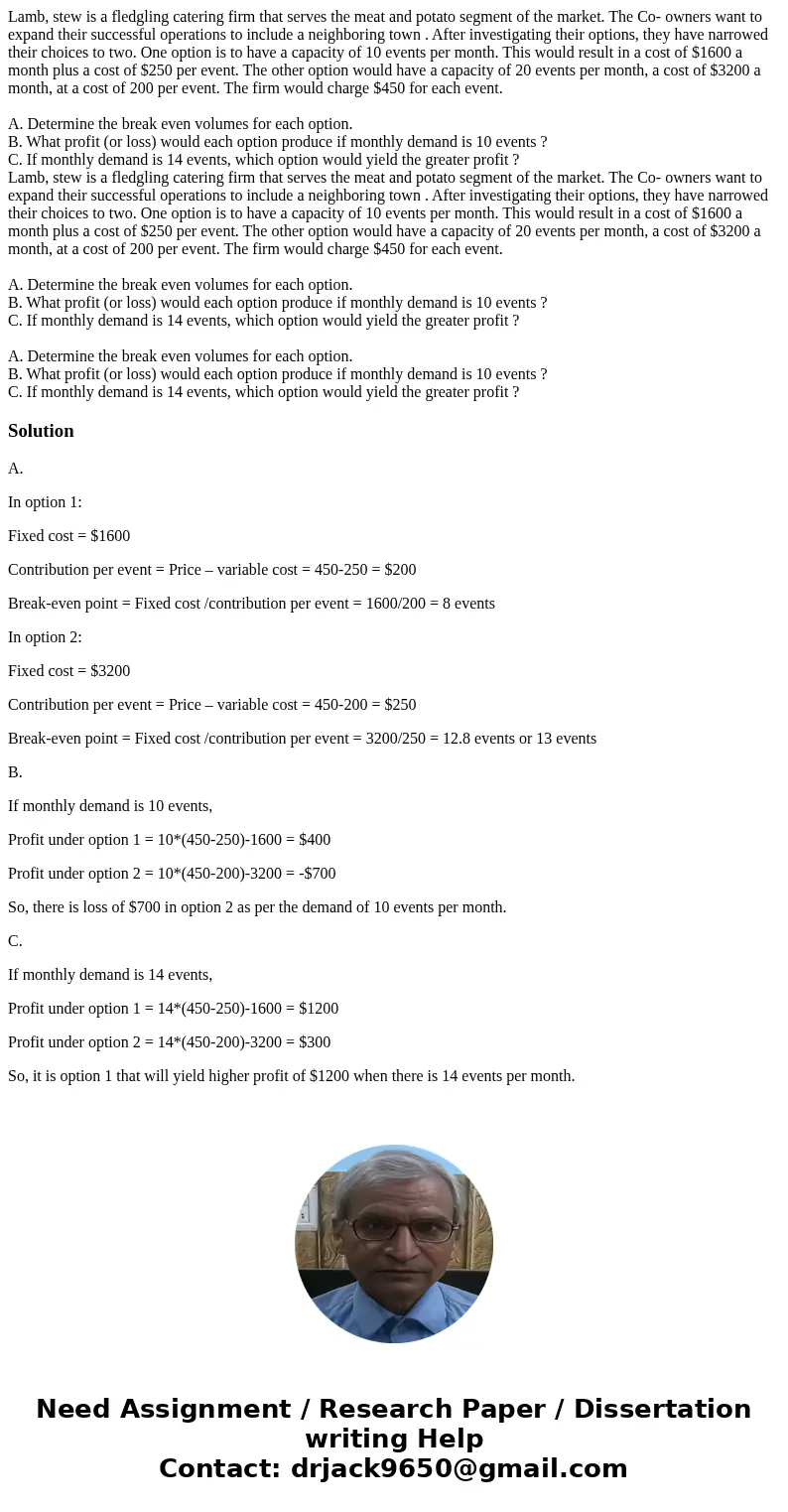Lamb, stew is a fledgling catering firm that serves the meat and potato segment of the market. The Co- owners want to expand their successful operations to include a neighboring town . After investigating their options, they have narrowed their choices to two. One option is to have a capacity of 10 events per month. This would result in a cost of $1600 a month plus a cost of $250 per event. The other option would have a capacity of 20 events per month, a cost of $3200 a month, at a cost of 200 per event. The firm would charge $450 for each event.
A. Determine the break even volumes for each option.
B. What profit (or loss) would each option produce if monthly demand is 10 events ?
C. If monthly demand is 14 events, which option would yield the greater profit ?
Lamb, stew is a fledgling catering firm that serves the meat and potato segment of the market. The Co- owners want to expand their successful operations to include a neighboring town . After investigating their options, they have narrowed their choices to two. One option is to have a capacity of 10 events per month. This would result in a cost of $1600 a month plus a cost of $250 per event. The other option would have a capacity of 20 events per month, a cost of $3200 a month, at a cost of 200 per event. The firm would charge $450 for each event.
A. Determine the break even volumes for each option.
B. What profit (or loss) would each option produce if monthly demand is 10 events ?
C. If monthly demand is 14 events, which option would yield the greater profit ?
A. Determine the break even volumes for each option.
B. What profit (or loss) would each option produce if monthly demand is 10 events ?
C. If monthly demand is 14 events, which option would yield the greater profit ?
A.
In option 1:
Fixed cost = $1600
Contribution per event = Price – variable cost = 450-250 = $200
Break-even point = Fixed cost /contribution per event = 1600/200 = 8 events
In option 2:
Fixed cost = $3200
Contribution per event = Price – variable cost = 450-200 = $250
Break-even point = Fixed cost /contribution per event = 3200/250 = 12.8 events or 13 events
B.
If monthly demand is 10 events,
Profit under option 1 = 10*(450-250)-1600 = $400
Profit under option 2 = 10*(450-200)-3200 = -$700
So, there is loss of $700 in option 2 as per the demand of 10 events per month.
C.
If monthly demand is 14 events,
Profit under option 1 = 14*(450-250)-1600 = $1200
Profit under option 2 = 14*(450-200)-3200 = $300
So, it is option 1 that will yield higher profit of $1200 when there is 14 events per month.

 Homework Sourse
Homework Sourse